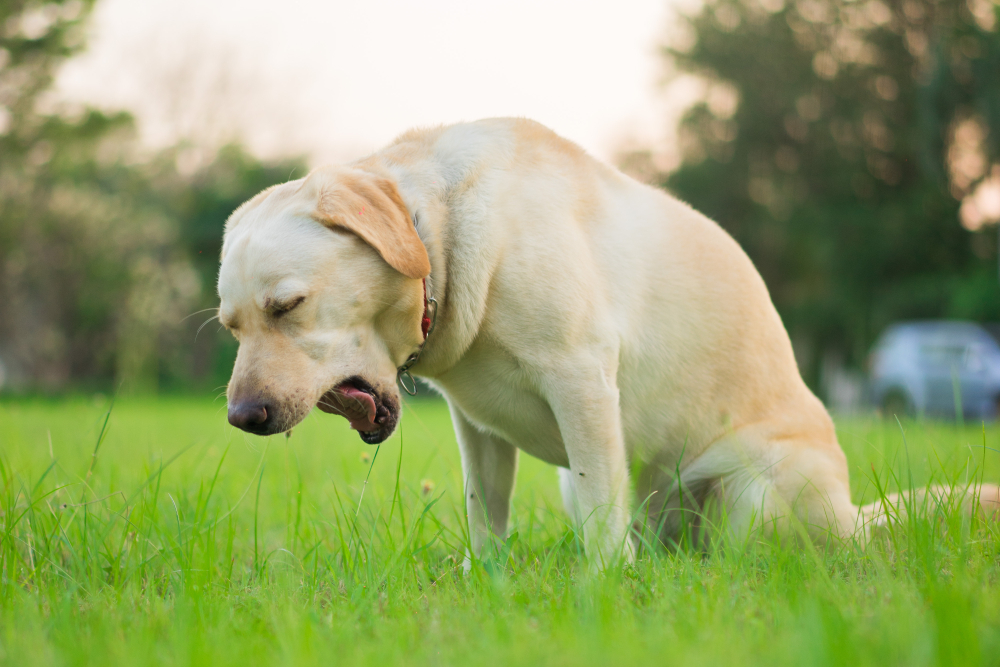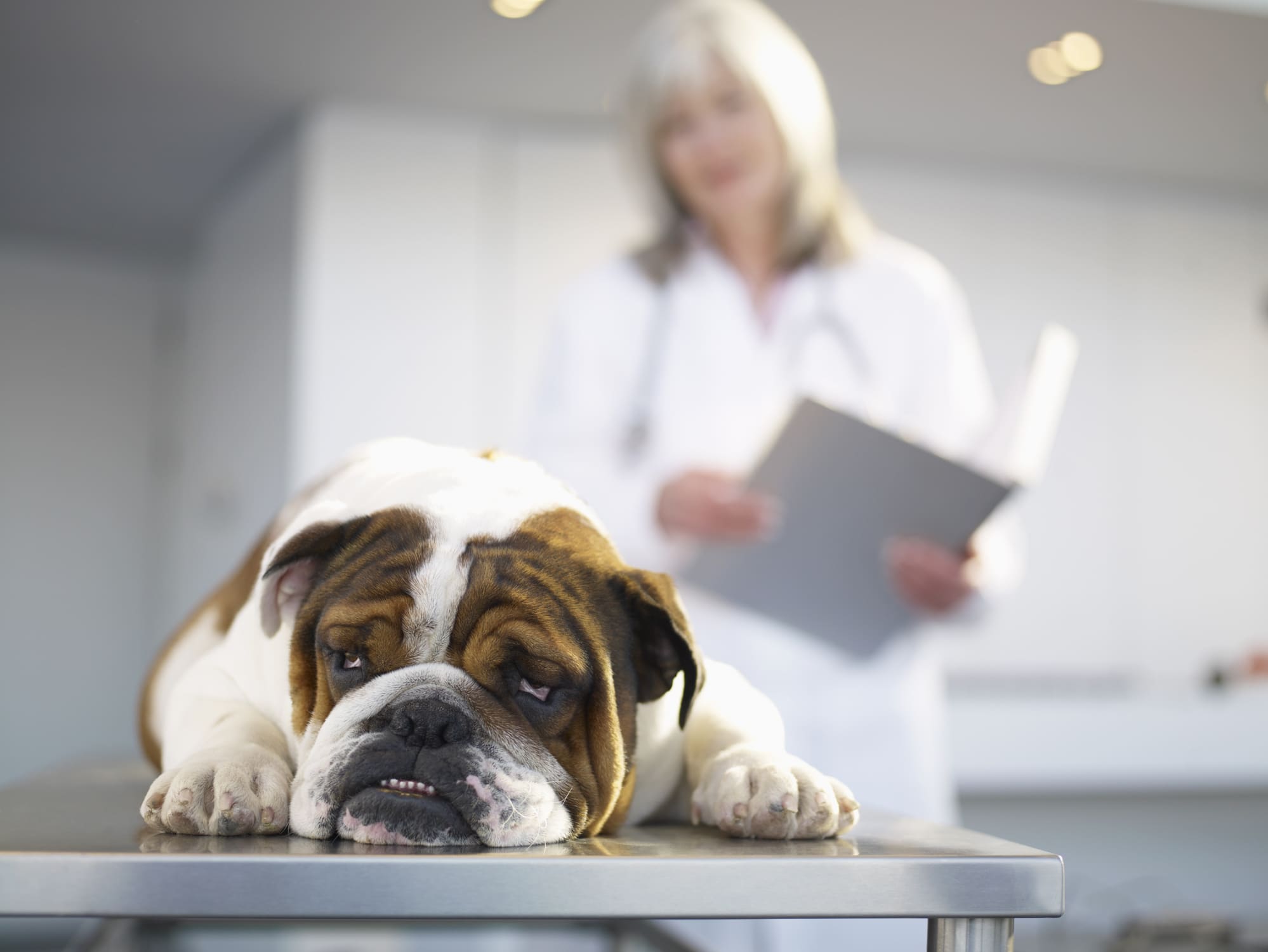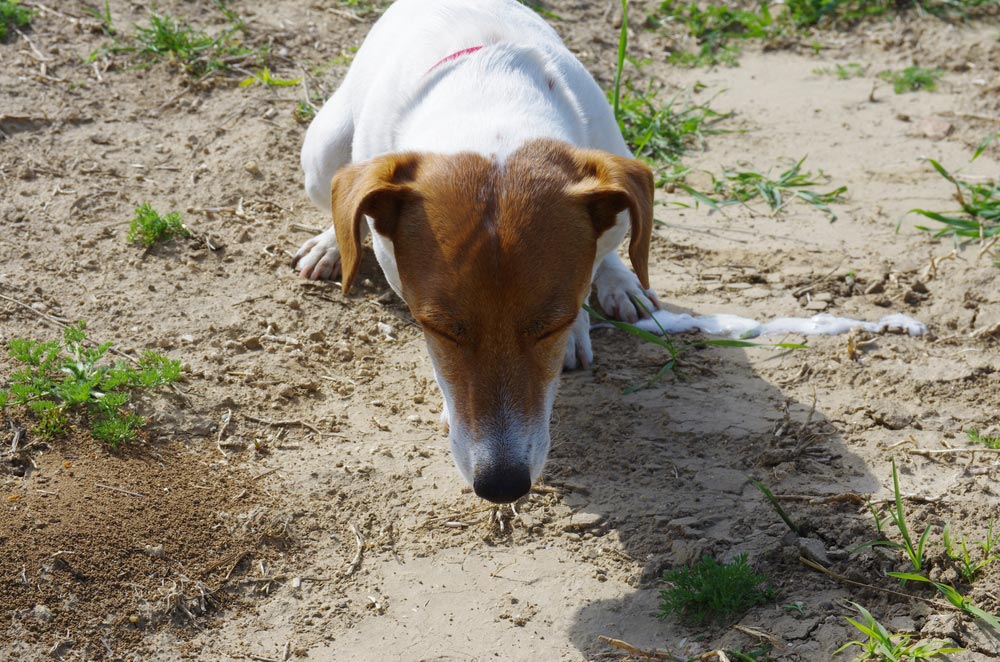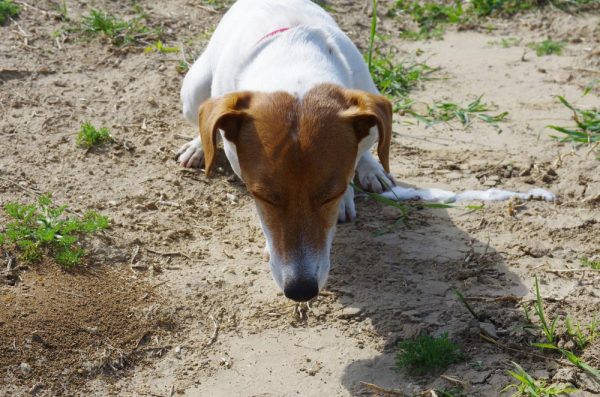Vomiting is a common sign of illness in dogs that almost always needs to be checked out by a vet, and most pet owners are basically programmed to notice and respond to their pet’s vomiting, as it is very unsettling to witness and hear. We know there are several reasons why our pets can become sick, from dietary indiscretion to viral infections, but what causes a dog to vomit white foam, specifically?
White foam can be seen in any condition that can lead to vomiting, and foam can also be seen with non-gastrointestinal concerns. The most important thing to do if you notice this happening is to take your dog in to see a vet as soon as possible.
Let’s learn a bit more about what is causing your dog to vomit white foam just below.

Why Do Dogs Vomit? What Causes Them to Vomit White Foam?
Similarly to humans, dogs vomit in an attempt to expel gastric contents from their stomachs. Sometimes, this is secondary to illness, whereas other times, it follows the consumption of inappropriate items. Vomiting white foam, specifically, is common and can occur in any condition that may result in vomiting.
- Foreign bodies
- Pancreatitis
- Dietary indiscretion
- Reflux or bilious vomiting
- Viral or bacterial infections
- Organ failure or dysfunction
One common cause of recurrent vomiting that often results in the expulsion of frothy foam is bilious vomiting. This can happen if the stomach has been empty for a long period of time and bile enters the stomach. Bile can be irritating to the stomach, which leads to nausea and vomiting. Due to the underlying cause of bilious vomiting, vomiting most often occurs early in the morning.
Bilious vomiting will be yellow or brown in coloration, although at times it can appear white and foamy. Often, bilious vomiting syndrome can be controlled through adjusting the feeding schedule. It is often recommended that pets with this syndrome should be fed right before bed to minimize the time in which their stomach is empty, as well as to be fed at least twice daily.

Coughing, Regurgitation, or Vomiting?
Occasionally, dogs with a hacking cough can produce white, foamy phlegm that owners may mistake as vomit. It is important to try to differentiate a cough from vomiting. Pneumonia, a serious respiratory infection, is one of the conditions that may result in the production of phlegm.
Additionally, it is important to determine regurgitation from vomiting. Vomiting exhibits signs of nausea, including abdominal contractions and noise. Regurgitation, on the other hand, doesn’t exhibit signs of nausea. In dogs with regurgitation, food or fluid just appears to fall out of their mouths without a dramatic lead-up.
Other conditions, like gastric dilatation and volvulus (GDV), can lead to retching without production. This occurs because of the stomach enlarging and twisting. Dogs may attempt to vomit to relieve themselves of the stomach pressure, but due to the twist, contents are unable to be expelled. However, in some cases of GDV, some phlegm may be produced. This condition is life threatening, and quick intervention is necessary if signs of GDV are noted.
When You Need Veterinary Intervention
Your veterinarian should be contacted if vomiting is persistent or if your pet is heaving without production. Heaving without production, along with the play bow stance, can be suggestive of bloat or gastric dilatation and volvulus. Treatment of the vomiting is heavily dependent on the underlying cause. For example, some causes of vomiting may require surgical intervention or medical intervention, or they may be addressed with symptomatic care.
Your vomiting pet will need to be examined by a veterinarian before treatment is initiated. Diagnostics like blood work and imaging may be recommended. Radiographs are helpful in identifying signs of abdominal obstructions or foreign bodies, two common reasons for vomiting in dogs. Similarly, radiographs may be able to illustrate respiratory tract abnormalities like pneumonia, which can also result in the production of phlegm.
Once a diagnosis has been made, your veterinarian will discuss treatment interventions. In some cases, a serious underlying cause may not be found, and your veterinarian may treat your patient symptomatically. Depending on the underlying cause of the vomiting, your veterinarian may feel comfortable administering an anti-vomit medication, like Cerenia. In other cases, surgical intervention or motility drugs may be warranted.

How Do I Care for My Vomiting Dog?
If your pet is experiencing vomiting, your veterinarian may recommend skipping a meal or to fast your pet to give their gastrointestinal tract a break.
In the event that your dog still has an appetite, it may be beneficial to feed them a low-fat, easily digestible meal. White rice and boiled white chicken breast are frequently used in times of gastrointestinal upset, and there are also veterinary-formulated diets available that achieve this same purpose. Furthermore, a pet with gastrointestinal upset may tolerate small, frequent meals much better than a single larger meal.
Although water intake should not be limited, your dog should not be allowed to empty an entire water bowl. If your dog is over-consuming water, encourage a break by picking up the bowl for a few minutes or distracting your pet with a trip outdoors. Excessive water intake can lead to vomiting or regurgitation, but water should still always be available to your pet.
It is critical to monitor for changes in your pet’s condition and schedule follow-ups as needed and recommended. In some cases, initial treatment used to address vomiting may not be successful, and adjustment to the treatment protocol may be necessary.
In Summary
Noting your dog is vomiting and how often this is occurring is very important. Close observation for signs suggestive of significant illness should be done. If vomiting is accompanied by lethargy or inappetence, a timelier vet visit is in order. Your veterinarian will make recommendations based on your dog’s age, history, and physical exam findings. Fortunately, many causes of vomiting can be treated with veterinary intervention.
Featured Image Credit: Enrico Spetrino, Shutterstock











